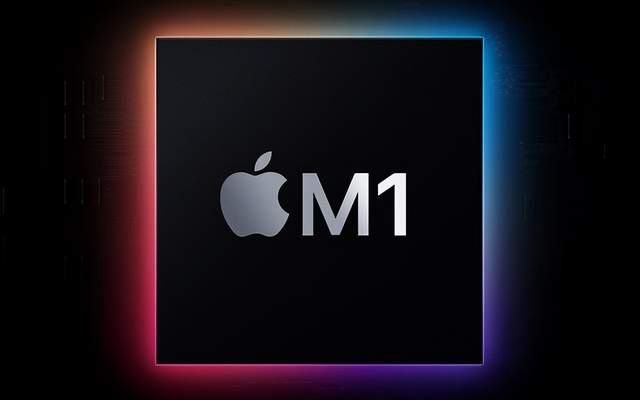People in the industry pointed out that Apple replaced Intel’s processors with the M1 series not only because of sufficient performance, but also because its power consumption is low enough, which can effectively save power and help design a more compact Mac. Biomin believes that the excellent energy efficiency of M1 will not only end Intel’s PC business, but may even lead to the destruction of the entire X86.

1. Apple M1 breaks the performance shackles of ARM
Apple’s M1 ultra is already comparable to Intel’s 12th generation i9 processor in terms of performance. Although geekbench thinks it surpasses the latter, other performance testing software data shows that Intel’s i9 is still stronger, but this is amazing enough to match it. Breaking the performance shackles of the ARM architecture.
The excellence of M1 Ultra is that its energy efficiency is amazing. In the case of performance close to i9, the power consumption is much lower. The design power consumption of M1 Ultra is only 60W, while Intel’s 12th generation i9 consumes 125W. In the case of high load, the power consumption gap between the two will be even greater, not to mention that the M1 Ultra not only has a CPU but also integrates a GPU with excellent performance. In this way, it can be seen that the CPU energy efficiency of the M1 Ultra is terribly higher.
The emergence of M1 Ultra means that the ARM architecture can not only replace Intel’s PC processor, but also point out the direction for the ARM camp. The ARM architecture can completely develop powerful server chips and still have the advantage of low power consumption, which may destroy Intel. and AMD’s x86 PC processor and server businesses.
2. Advantages of Intel’s server chips
Consumers are mainly exposed to Intel’s PC processors. In fact, the more important business for Intel is the server business. The server business provides most of Intel’s profits, and the importance of the server business is even more prominent in the current situation where AMD’s competition with it is becoming increasingly fierce. Intel still occupies more than 90% of the market share in the server chip market. If you add AMD’s For server chips, the X86 architecture accounts for nearly 99% of the server chip market.
The price of X86 server chips is too expensive. In the past ten years, due to the fierce competition in the PC processor market, Intel has had to continue to reduce the price of PC processors, but it has continued to increase prices in the server chip market because there is no competition. It has caused server suppliers and Internet companies with data centers to complain, but due to the ecological advantages of X86 server chips and the lack of challengers, they still have to endure Intel’s hegemony.
In the past, many server chip companies have challenged Intel in the ARM camp. Unfortunately, most of them have become martyrs. Qualcomm also launched server chips but gave up after only one year. Now only Huawei is still insisting, and Huawei has also established itself in China. The market has successfully promoted ARM-based server chips, but their market share is quite limited.

It is difficult for the ARM architecture to break the monopoly of X86 server chips. On the one hand, it is due to ecological problems, and on the other hand, the performance of ARM server chips in the past is too weak. Now the appearance of Apple M1 Ultra proves that the ARM architecture can actually develop performance comparable to X86. The chips still have low enough power consumption, which will prompt more chip companies to develop ARM-based server chips.
3. The ARM architecture is expected to end Intel’s server chip business
For data centers, energy consumption has become a huge cost. An analysis data released in 2017 shows that the electricity bills of Chinese data centers account for 60%-70% of the total cost of data center operation and maintenance, while the electricity bills for air conditioners Accounting for 40% of it, only about 30% of the power used by the data center is used for computing, and the rest is dissipated as heat, and a huge amount of energy has to be consumed for auxiliary cooling. This shows how amazing the energy wasted by X86 server chips .
The energy occupied by data centers is still rising, because the existing data is in the blowout stage, and the demand for data centers is soaring. The energy consumption caused by X86 server chips not only makes it difficult for enterprises to bear the huge energy cost burden, but also causes Huge carbon emissions. In order to reduce the energy consumption of the data center, various Internet companies have come up with many strange tricks. For example, Microsoft has set up the data center on the seabed, and Facebook has set up a data center in cold Sweden. What an effort.
Today, the power consumption of the M1 ultra developed by Apple is only half of that of i9, and one-third of that of Intel and AMD server chips, but its performance is quite close, which provides new choices for these data center customers. The power consumption is reduced, the heat generation is greatly reduced, and the cost of air conditioning is greatly reduced. While providing sufficient performance, the energy cost can be reduced by more than half, which is enough to attract these data centers to accelerate the adoption of ARM architecture server chips.
In this way, the ARM architecture will not only replace X86 in the PC processor market, but also destroy X86 in the server chip market. This terrible prospect should not be what Intel wants to see. No wonder Intel has been interested in RISC-V since last year. Now, maybe it has seen the future where X86 is completely replaced?



